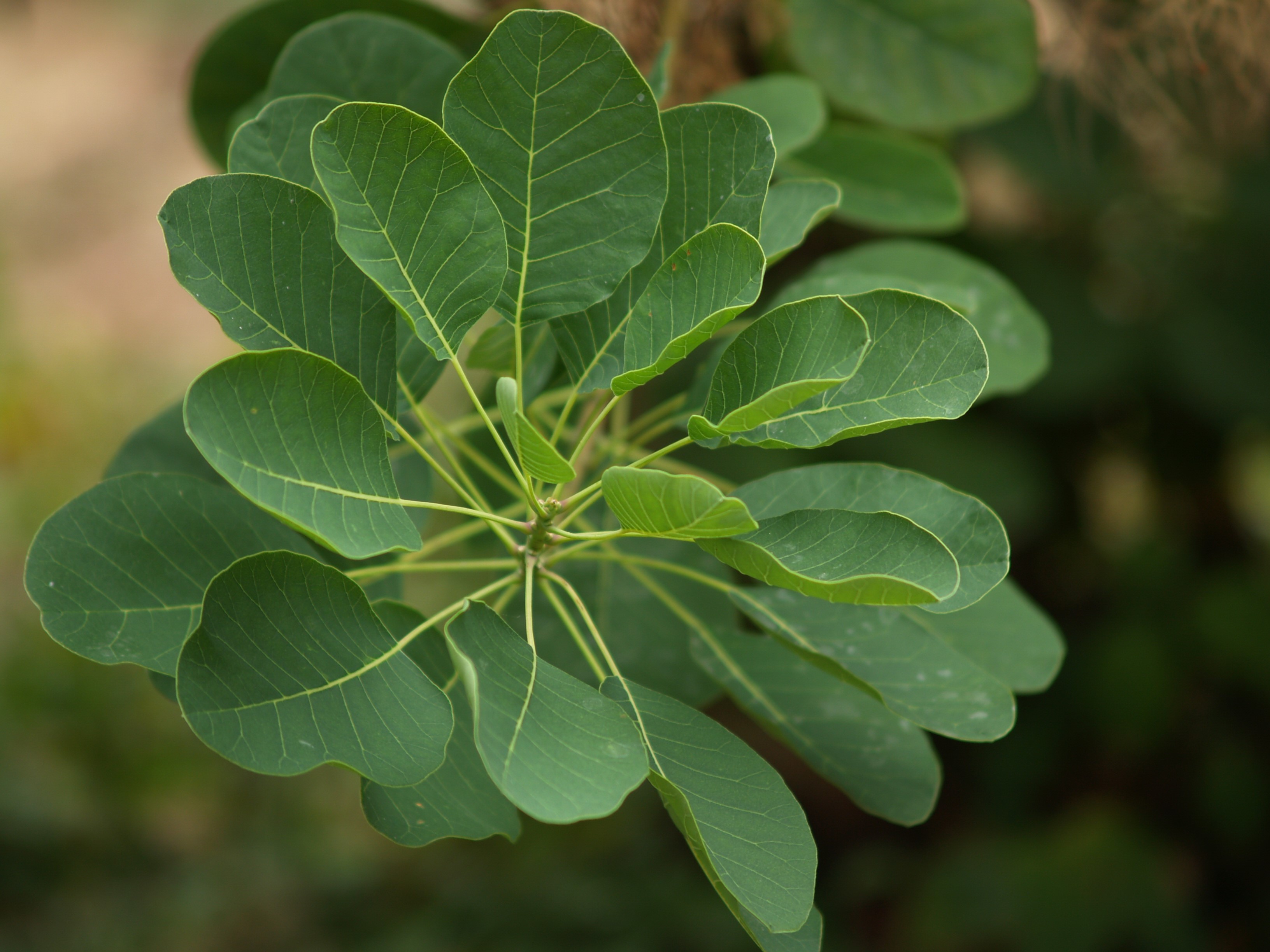
Smoke Tree
Cotinus coggygria
Family and description
It is a deciduous shrub of the Anacardiaceae family, which can reach about 5 m in height.
It usually has an irregular rounded crown.
The leaves are oval, 3 to 8 cm long, rounded, simple, alternate and green with a waxy lustre. In autumn the foliage acquires yellowish, orange or red tones, depending on the variety.
It generates inflorescences of 15 to 30 cm long, with large pale-yellow flowers, a diameter of 5 to 10 mm and five petals. The panicles change colour as they mature between June and September, giving rise to purplish feather plumes with a “smoky” appearance when seen from afar. These plums surround the small fruit, small kidney-shaped brown drupes.
It is a dioecious species, with specimens producing female flowers and others producing male flowers.
Origin and habitat
Native to southern and eastern Europe, it is distributed throughout Central Asia and from Himalaya to northern China, naturally occurring on rocky slopes of open bushes, with poor soils, often schist.
This plant tolerates several types of soils, sandy, clay, dry or humid, developing very well in situations of direct light but tolerating partial shade.
Uses and curiosities
The roots and stems produce an orange dye. Its leaves and bark are a good source of tannins, and have coagulant properties, reduces fever, and is a treatment for eye diseases. In China and the Himalayas, the shoots and ripe fruit are consumed as an emergency food source.
Propagation can be done through stakes, being a plant that is difficult to root.
Being a dioecious plant, sexual reproduction is necessary for seed production. Green seeds that are fully developed germinate more easily, usually in spring. The seeds can be stored for several years. It resists well to transplant. It is a low maintenance plant, no pruning is required, although it promotes a more intense colouring of the foliage.

